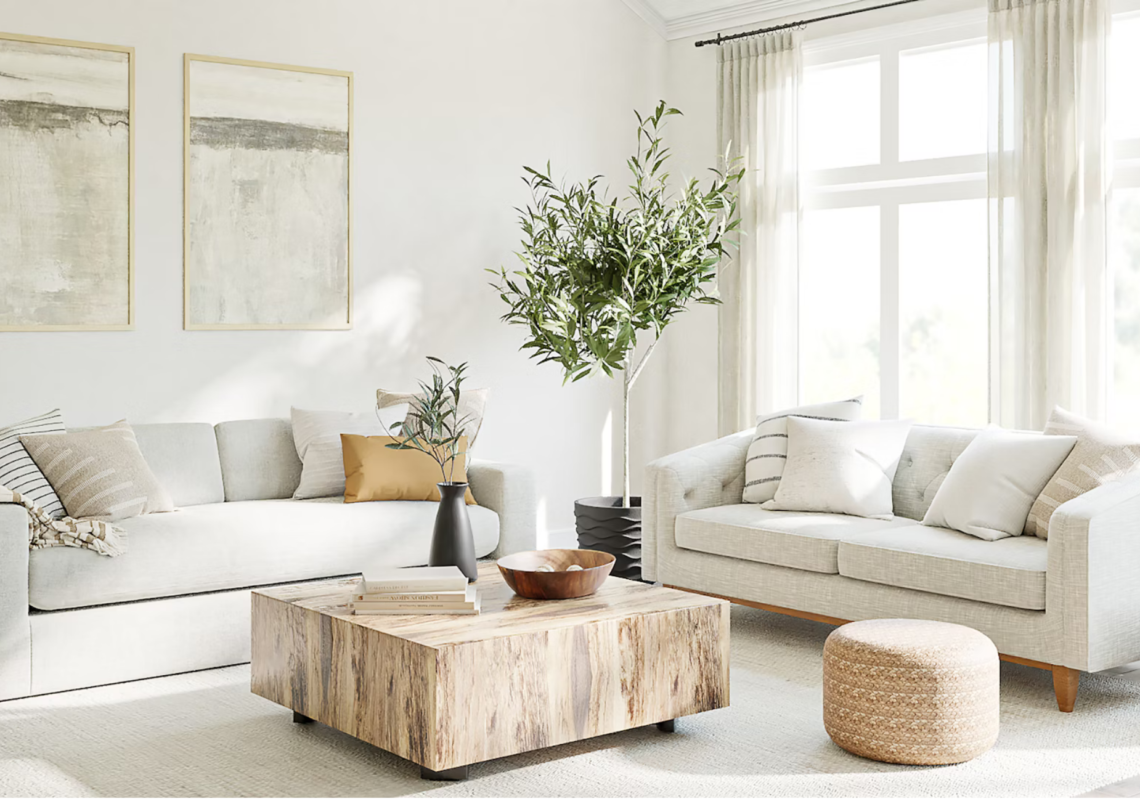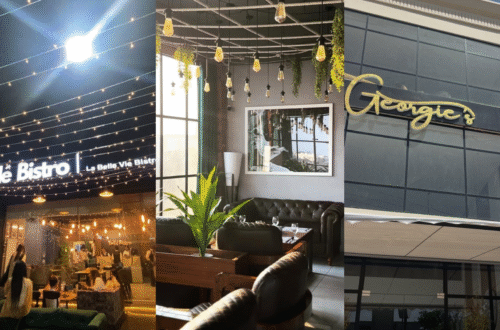Think of interior design trends as a guide that helps us navigate the changes in how our homes and workplaces look and function. These trends aren’t just about what looks nice; they also reflect our values, dreams, and how we use our spaces.
As we enter 2024, interior design is still changing, giving us new ideas to make our homes and offices better. Keeping up with these trends isn’t just about following others; it’s about creating spaces that match who we are, what we need, and how we want to feel.
So, let’s take a closer look at the trends shaping interior design in 2024. Get ready for an exciting journey through the latest trends that are shaping the way we live in our spaces!
What’s In – Latest Interior Design Trends
1 – Sustainable and Eco-Friendly Materials
Sustainable and eco-friendly materials are becoming increasingly popular in interior design trends for their low environmental impact and contribution to healthier living spaces.
Popular Sustainable Materials
- Bamboo: A rapidly renewable resource that can be used for flooring, furniture, and even textiles.
- Recycled and Reclaimed Wood: Using wood from old buildings or furniture reduces the demand for new timber and gives new life to materials that would otherwise be discarded.
- Recycled Glass: Glass can be recycled endlessly without losing quality, making it an eco-friendly choice for countertops, tiles, and decorative elements.
- Low VOC Paints and Finishes: Volatile Organic Compounds (VOCs) are harmful chemicals found in many conventional paints and finishes. Moreover, low VOC alternatives emit fewer harmful gases, improving indoor air quality.
Eco-friendly Design Practices in Interior Design Trends
Upcycling: Repurposing old or unused items into new furniture or decor pieces reduces waste and adds character to a space.
Energy-efficient lighting: Switching to LED bulbs and incorporating natural light through strategically placed windows and skylights can reduce energy consumption and lower utility bills.
Indoor plants: Not only do plants add beauty to interior spaces, but they also improve air quality by filtering out pollutants and increasing oxygen levels.
2 – Biophilic Design
Biophilic design principles are grounded in the concept of biophilia, which suggests that humans have an inherent affinity for nature. Moreover, these principles aim to mimic the patterns, forms, and processes found in nature within the built environment. Some key principles of biophilic design include:
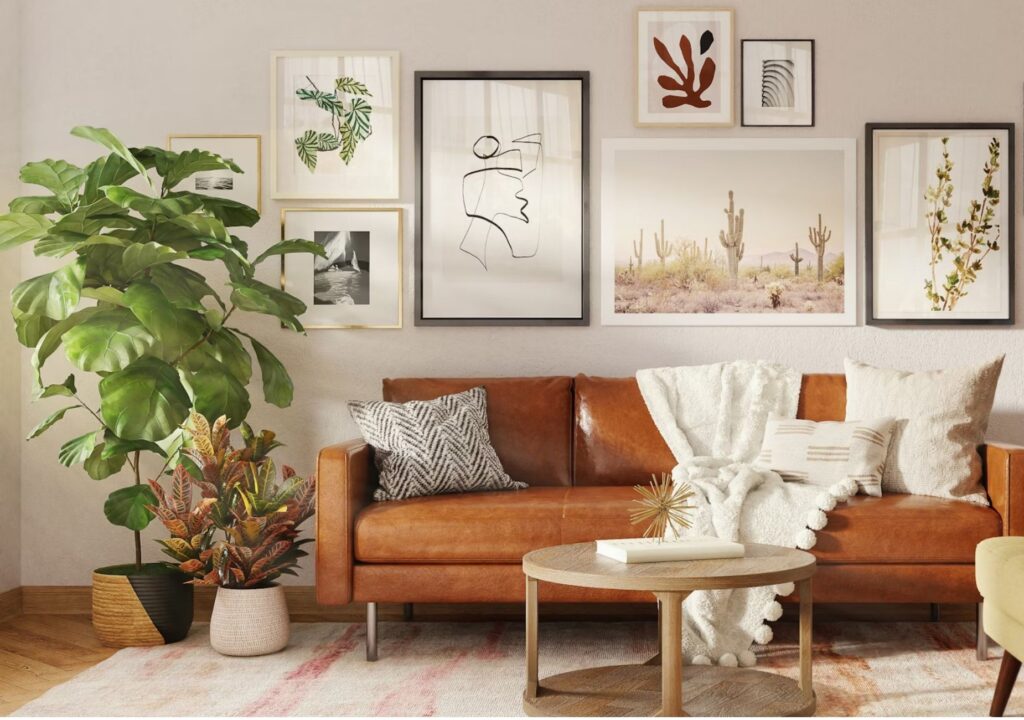
How to Incorporate Nature into Interior Spaces?
Bring in plants: Incorporating houseplants into interior spaces is one of the easiest ways to add a touch of nature. Consider placing potted plants on windowsills, shelves, or as centerpieces on tables.
Use natural materials: Choose furniture, flooring, and decor made from natural materials like wood, stone, rattan, or jute to create a sense of warmth and connection to the outdoors.
Maximize natural light: Position furniture to take advantage of natural light sources, and use sheer curtains or blinds to allow sunlight to filter into the space while maintaining privacy.
Create nature-inspired artwork: Hang paintings or photographs depicting landscapes, botanicals, or wildlife to evoke the beauty of the natural world.
3 – Multifunctional Spaces
With the increasing trend of urbanization and smaller living spaces, the need for flexibility in how we use our homes has become more apparent. Multifunctional spaces offer versatility, allowing rooms to serve multiple purposes throughout the day.
For example, a living room might transform into a guest bedroom at night with a sofa bed or a Murphy bed. Similarly, a home office could double as a workout area with the addition of foldable exercise equipment.
Examples of Multifunctional Furniture and Layouts
Sofa beds: These versatile pieces of furniture serve as comfortable seating during the day and can be easily converted into a bed for overnight guests.
Wall beds (Murphy beds): These beds fold up into a wall or cabinet when not in use, freeing up floor space in small bedrooms or multipurpose rooms.
Modular furniture: Modular sofas, shelving units, and storage systems offer flexibility in configuration, allowing users to customize their layout based on changing needs and preferences.
Sliding doors and partitions: Sliding doors and room dividers can be used to section off areas within a room, providing privacy when needed or opening up the space for larger gatherings.
4 – Maximalism
In contrast to the sleek and minimalistic interior design trends of recent years, maximalism is making a comeback. It embraces bold colors, intricate patterns, and eclectic decor to create rich and vibrant interiors.
Maximalism rejects the notion of less is more and embraces the philosophy of more is more. Moreover, it celebrates individuality, creativity, and self-expression, encouraging homeowners to layer textures, mix patterns, and showcase their personality through their surroundings.
Examples of Maximalist Interiors in Interior Design Trends
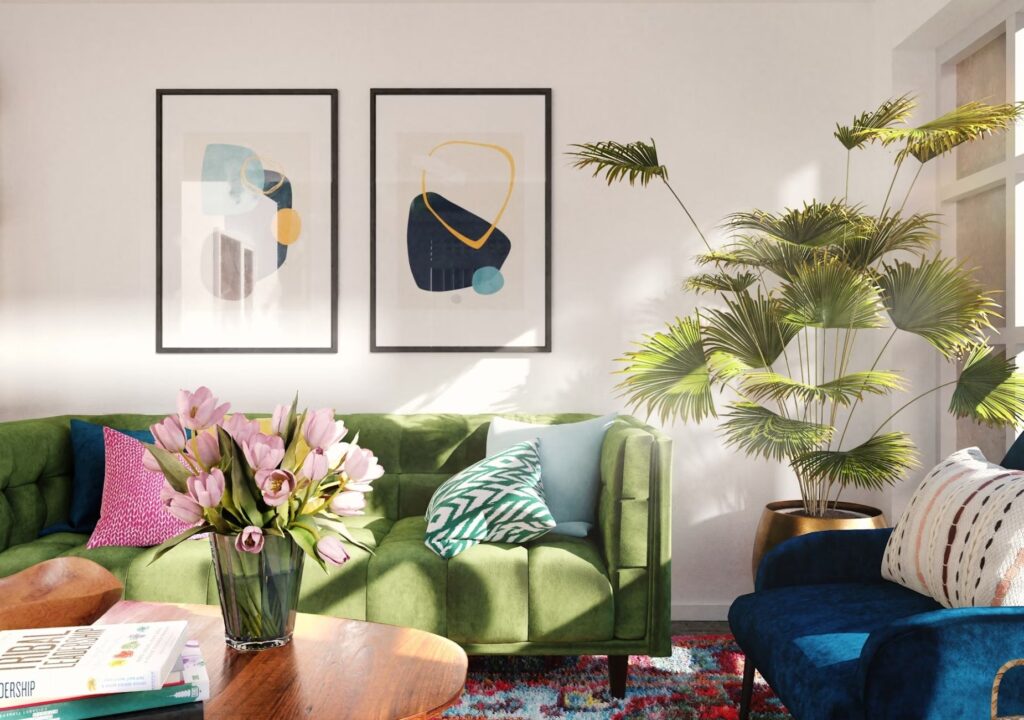
Vibrant color palettes: Maximalist interiors often feature rich and saturated colors, from jewel tones like emerald green and sapphire blue to bold hues like mustard yellow and fuchsia pink.
Layered patterns and textures: Mixing patterns, textures, and prints adds depth and visual interest to a space. Think floral wallpapers, geometric rugs, and velvet upholstery combined in unexpected ways.
Statement pieces: Oversized artworks, sculptural furniture, and dramatic light fixtures serve as focal points in maximalist interiors, commanding attention and adding drama to the space.
Personalized collections: Displaying collections of art, antiques, books, and memorabilia adds a sense of nostalgia and personal history to a maximalist interior, reflecting the homeowner’s passions and interests.
What’s Out – Avoid These Interior Design Trends in 2024
1 – Single-Use Plastics and Non-Renewable Materials
People are becoming more conscious of the environmental impact of single-use plastics and non-renewable materials, prompting a decline in their usage in interior design. This shift is driven by concerns about plastic pollution in oceans and waterways, as well as the depletion of finite resources like fossil fuels.
Alternatives to Replace Single-Use Plastics
Biodegradable and compostable materials: Bioplastics made from renewable resources such as cornstarch, sugarcane, or cellulose offer a more sustainable alternative to traditional plastics. These materials break down naturally over time, reducing environmental harm.
Recycled and upcycled materials: Repurposing materials like glass, metal, and wood through recycling or upcycling helps divert waste from landfills and reduces the demand for new resources. Recycled plastic lumber, for example, can be used for outdoor decor and decking, while upcycled glass can be transformed into decorative tiles or countertops.
2 – Monochromatic Color Schemes
Designers and homeowners are embracing vibrant and diverse color palettes to add personality, warmth, and visual excitement to their interiors. This trend celebrates using bold colors, contrasting hues, and unexpected color combinations. Moreover, it creates dynamic and expressive spaces that reflect individual tastes and preferences.
Examples of Popular Color Combinations in Interior Design Trends
Jewel tones: Rich and saturated colors like emerald green, sapphire blue, ruby red, and amethyst purple add depth and drama to a space, creating a sense of luxury and opulence.
Earthy neutrals: Warm and earthy tones like terracotta, ochre, rust, and olive green bring a sense of nature and tranquility to interiors, creating a cozy and inviting atmosphere.
Pastel hues: Soft and soothing pastel colors like blush pink, baby blue, mint green, and lavender infuse spaces with a sense of serenity and sophistication, perfect for creating relaxing and harmonious environments.
High-contrast combinations: Pairing bold colors with contrasting neutrals creates visual impact and adds energy to a space. Examples include black and white, navy blue and gold, or red and charcoal gray.
3 – Static Furniture Arrangements
Static furniture arrangements are replaced by versatile layouts that can be easily reconfigured to suit different purposes and occasions. Moreover, this trend reflects the growing desire for multifunctional spaces seamlessly transitioning between work, leisure, and socializing.
Tips for Creating Dynamic Living Spaces
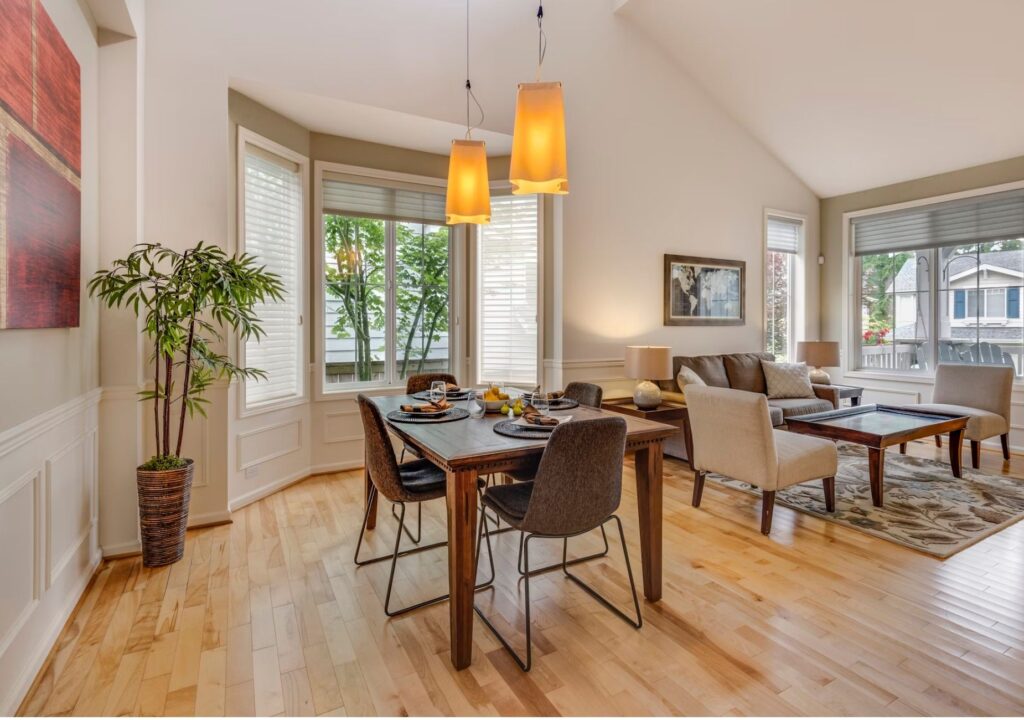
Opt for lightweight and portable pieces: Choose furniture that is lightweight and easy to move, such as chairs with handles or wheels, nesting tables, and folding chairs, to facilitate quick and effortless rearrangements.
Consider dual-purpose furniture: Look for furniture pieces that serve multiple functions, such as ottomans with built-in storage, coffee tables that convert into dining tables, or daybeds that double as seating and sleeping areas.
Experiment with different layouts: Don’t be afraid to experiment with different furniture arrangements to find the most functional and visually appealing layout for your space. Also, try out different configurations and adjust as needed until you find the perfect balance.
4 – Overly Formal Spaces
The trend towards overly formal and stuffy interiors is making way for more relaxed and inviting environments that prioritize comfort and casual elegance over strict adherence to traditional design conventions.
Examples of Casual Elements in Interior Design Trends
Comfortable seating: Plush sofas, oversized armchairs, and cozy seating nooks invite relaxation and encourage lounging, while soft textiles like throws and pillows add warmth and comfort.
Layered textures: Mixing textures like wool, cotton, jute, and velvet adds depth and visual interest to a space, creating a tactile and inviting environment that beckons to be touched and explored.
Personal touches: Displaying cherished heirlooms, family photographs, and eclectic collections of artwork and accessories adds personality and character to a space, making it feel uniquely yours.
Conclusion
In conclusion, the interior design trends 2024 reflect a shift toward sustainability, flexibility, and comfort. We’re saying goodbye to single-use plastics, excessive clutter, and overly formal spaces. Moreover, embracing eco-friendly materials, vibrant colors, and relaxed atmospheres.
By creating spaces that align with our values and lifestyles, we can foster harmony and well-being in our homes and workspaces while also contributing to a healthier planet. Let’s design spaces that inspire and nurture us for years to come.
